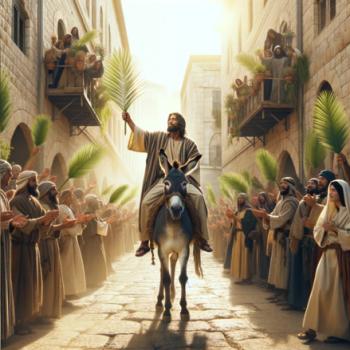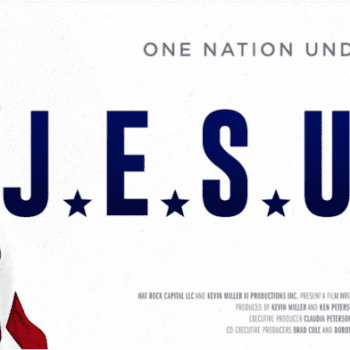
Pastors have a frequent question when they begin to discover mimetic theory. “That’s great. But how does it preach?”
Reverend Tom Truby show that mimetic theory is a powerful tool that enables pastors to preach the Gospel in a way that is meaningful and refreshing to the modern world. Each Wednesday, Teaching Nonviolent Atonement will highlight Tom’s sermons as an example of preaching the Gospel through mimetic theory.
In this sermon, Tom reflects upon the first sign Jesus performed – turning water into wine at the wedding at Cana. Signs point beyond themselves. Tom states that this sign points to “the joy of the universe.” The sign also points to the cross and resurrection, where the human ways of death are turned into God’s way of life. “Something extravagant is happening here,” writes Tom, “something generous beyond expectation, something overflowing with love beyond our comprehension.”
Year C, Epiphany 2
January 17th 2016
By Thomas L. Truby
John 2:1-11
Isaiah 62:1-5
Weddings, Signs, and the Flow of Divine Love
In John’s gospel nothing is accidental. “On the third day there was a wedding in Cana of Galilee, and the mother of Jesus was there.” Fast forward three years to another third day and we again find the mother of Jesus. She has just witnessed the death of her son two days before and does not know what is about to happen. On this third day instead of turning water into wine, Jesus turns death into life. According to St. John this is the glory the story reveals, the first of Jesus’ miraculous signs.
Signs point to things beyond themselves, things that are much bigger. The Gospel of John has lots of signs and this is the first one and it’s huge. This morning, I want to explore how the water for washing gets turned to exquisite wine at a wedding in Cana of Galilee and all of this point to the joy of the universe.
Chapter two begins just after Jesus called Phillip and Nathanael to follow him. Three days later they find themselves at a wedding. The wedding was in Cana at the center of Galilee. Galilee is the Provence farthest from Jerusalem, the capital city. An outbreak of something new comes from those on the edge, those most distant from the usual source of power.
As we enter into 2016 our national mood seems to center on the belief that nothing good can come from the capital. The fighting we see there so puts us off that we express our anger and dismay by looking for leadership from outside Washington. We are very aware that humanity needs something different, something fresh and John’s story has Jesus beginning his ministry in Galilee, a distant place, with a sign. And strangely the sign takes place at a wedding, a celebration of covenant between a groom and a bride.
Those in attendance include Jesus’ mother, Jesus and his disciples. Sometime during the week-long celebration the host ran out of wine. “Jesus’ mother said to him, ‘They don’t have any wine.’ Jesus replied, ‘Woman, what does that have to do with me?’” The commentators assure us it wasn’t an insult in the original context but it sure sounds like one.
Maybe the abruptness of Jesus’ response provides a clue to this being an announcement of something far larger than providing wine at a wedding. If Jesus changes water into wine he will have to change death into life and that means the cross. He seems reluctant to start. He’s tempted to drag his feet like we did as kids when we had to go out and do the chores and it was 10 below zero. It was amazing how long we could take putting our mittens on. In a strange sort of way Mary seems to be calling Jesus to his mission and he seems to be resisting by saying “My time hasn’t come yet.”
But the time had come. It was time to do what he had come to do, time to move toward his death, his resurrection and his ascension—in all four gospels everything moves toward his time, the center of all time. The wedding at Cana marks the beginning of the end. And yet the beginning is a celebration of covenant where the bride is joined to the bridegroom during a feast flowing with joy and celebration. Does the joy symbolize our joy because we are the bride?
The mother of Jesus seems to ignore her son’s response as she tells the servants “Do whatever he tells you.” Sometimes mom’s know things that son’s aren’t quite ready to see. I remember when I took Laura, the one who later became my wife, to my home in Nebraska to meet my family for the first time. We were both students in seminary in Kansas City at the time. My mother thought Laura was a wonderful young woman and very good for me and told me so on the side. While I couldn’t imagine marriage at that point, I knew permission had already been granted. My time to step up to the plate hadn’t come yet but it wasn’t far off.
The story now shifts to the necessary props needed to carry the meaning of this event. “Nearby were six stone water jars used for the Jewish cleansing ritual, each able to hold about twenty or thirty gallons.” That is 120 to 180 gallons of capacity and it wasn’t water cooler water, it was water for washing.
So the servants fill six huge stone jars with water. How do you make a stone jar? Do you carve it out of a solid piece of rock? Can you imagine how long that would take? Does this symbolize how long and hard people had worked to make their hearts clean enough for God? Where is this story leading?
“Jesus said to the servants, ‘Fill the jars with water,’ and they filled them to the brim.” Every one of those six jars was filled and a drop or two slid off the side and soaked into the ground. St. John wants us to know that something extravagant is happening here, something generous beyond expectation, something overflowing with love beyond our comprehension.
Jesus next told them, “’Now draw some from them and take it to the headwaiter;’ and they did.” We know what happens next. The ritual cleaning water had changed to wine better than any they had ever tasted. Cleaning water they used to make themselves ritually pure had been changed to fine drinking wine.
Jesus had taken the initiative and now the deed was done. The move toward Jerusalem and the changing of death to life had begun. The commentator in John’s gospel tells us “This was the first miraculous sign that Jesus did in Cana of Galilee. He revealed his glory, and his disciples believed him.” For St. John Jesus’ glory is always his death and resurrection.
The Isaiah passage we read tracks the movement from rejection to being delighted in; from abandonment and desertion to marriage and being cared for. It’s the movement Jesus wants us to experience and reason he came.
Humans have always felt either unclean and unworthy or cleaner than their neighbor and self- righteous. Either attitude creates divisions and hurts us all. The water in those stone jars had always been used to divide people into “the pure” and “the impure”. The so called pure people had reason to exclude the impure and the so called impure had reason to just give up. But now that water no longer existed. It had been changed to wine and all drank it together. Maybe all along division and strife had been the dirt humans have tried to wash off but washing only made it worse.
The problem seemed deeper than washing could touch; like tattoo ink that can’t be removed by water. Maybe instead of washing something off we need to take something in to where we are transformed from the inside and so cease being division-generators.
The writer of John’s gospel knew there was a way to create wine from water but it was costly and not by magic. It involved Jesus going to the cross and exposing human wrath on the way. Maybe this explains Jesus’ reluctance to begin. This was a temptation came very early in Jesus’ ministry. Come to think of it, John’s gospel has no temptation story. This is its functional equivalent.
The transformation of wine at the wedding marked the beginning. Jesus would now live into the changing of water to wine and he would do it through his death, resurrection and ascension. This was his glory.
Isaiah saw the transformation coming when he wrote “You will no longer be called Abandoned, and your land will no longer be called Deserted. Instead, you will be called My Delight Is in Her, and your land, Married.” You see, Jesus was the bridegroom and we are the bride. We too are common water being changed to fine wine. Thanks be to God. Amen.















